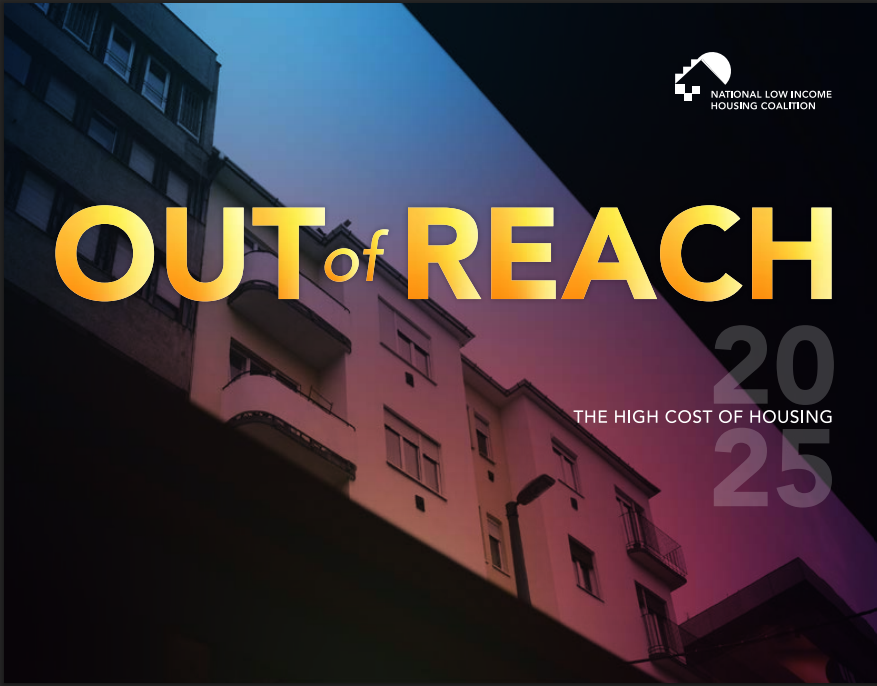Out of Reach 2025: What the Data Means for Charlotte-Mecklenburg
Mary Ann Priester
Senior Management Analyst
Mecklenburg County Community Support Services
Last week the National Low Income Housing Coalition (NLIHC) released Out of Reach 2025: The High Cost of Housing, an annual report that examines the increasing gap between wages and the cost of rental housing in the United States.
This blog highlights key takeaways from the report, explores state and local data, and considers what these findings mean for Charlotte-Mecklenburg.
OUT OF REACH 2025
The Out of Reach report is an annual report released by NLIHC. It utilizes 2025 Department of Housing and Urban Development’s (HUD) Fair Market Rent (FMR) data, Census American Community Survey (ACS) data, wage data from the Bureau of Labor Statistics, and Social Security Income (SSI) data. These data are used to calculate a housing wage that determines the hourly wage a household needs to afford a modest rental home in their local housing market without spending more than 30% of their gross income on housing costs.
KEY TAKEAWAYS
The Out of Reach 2025 report reveals a growing disparity between typical rental housing costs and what most workers earn, pointing to rising housing instability for low-income renters across the country. An analysis of national data indicated the following key takeaways:
- To afford a modest 2-bedroom rental home, a full-time worker must earn $33.63/hour, well above the federal minimum wage of $7.25.
- Almost half of workers in the United States earn less than what’s needed for a fair market rent one-bedroom rental.
- 4 million renters are cost-burdened, spending more than 30% of their income on housing costs. Over 12 million are severely cost-burdened which means they spend more than half their income on rent.
- Women and people of color are disproportionately impacted by the widening housing wage gap due to systemic wage and employment disparities.
- Due to underfunding, only 1 in 4 eligible households receive federal rental assistance.
- To address the affordability crisis, significant federal investment in rental assistance and affordable housing construction is needed.
LOCAL DATA
North Carolina
- In North Carolina, the hourly housing wage to afford a two-bedroom apartment at HUD’s FMR is $27.14 per hour, a $2 increase from the 2024 hourly housing wage ($25.21).
- To afford a 2-bedroom rental, a minimum wage worker would need to work 150 hours per week or 3.7 full time jobs. They would need to work 131 hours per week to afford a 1-bedroom rental.
- Almost half of renters in North Carolina (48%) are cost-burdened which means they are at-risk for eviction, displacement, and homelessness.
- The Durham-Chapel Hill HMFA has the highest 2-bedroom housing wage in the state requiring $36.00 per hour to afford a fair market 2 bedroom rental.
Charlotte-Concord-Gastonia HUD Metro FMR Area (HMFA)
In the Out of Reach report, Charlotte data is reported at the HUD Metro FMR Area level. This area consists of Charlotte, Concord, and Gastonia. Data is not provided at the County level or exclusively for the City of Charlotte.
- In the Charlotte-Concord-Gastonia HMFA, the hourly housing wage to afford a two-bedroom apartment at HUD’s FMR is $35.08 per hour, almost $8 higher than the North Carolina statewide housing wage.
- To afford a 2-bedroom rental, a minimum wage worker would need to work 164 hours per week or almost 4 full-time jobs.
- There are 261,659 renter households in the HMFA that are extremely low income earning ≤ 30% of Area Median Income.
- Fifty-one percent of renters in the Charlotte-Concord-Gastonia HMFA are cost-burdened which means 51% of renters in the HMFA are at risk for housing instability.
The Charlotte-Concord-Gastonia HMFA has the second highest two-bedroom housing wage among North Carolina metropolitan areas.


